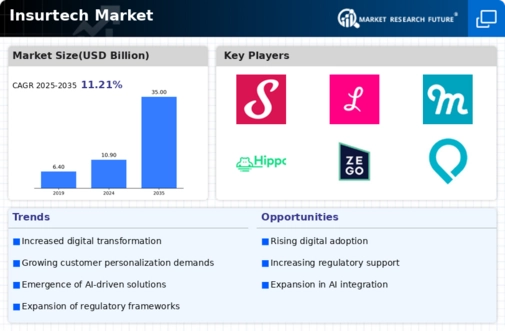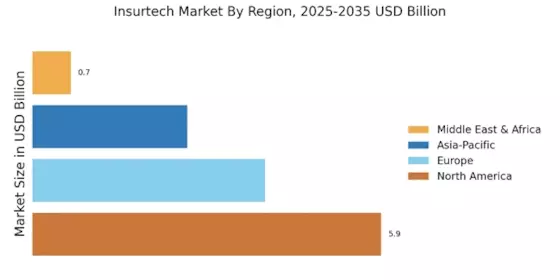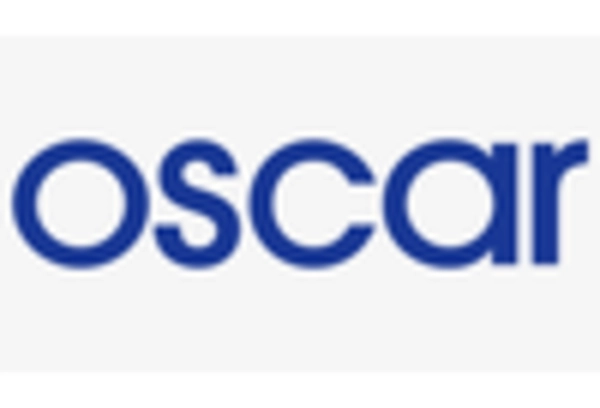Integration of Advanced Technologies
The Insurtech Market is significantly influenced by the integration of advanced technologies such as artificial intelligence, machine learning, and big data analytics. These technologies enable insurers to streamline operations, enhance risk assessment, and improve customer engagement. For instance, AI-driven chatbots are increasingly utilized for customer service, providing instant support and reducing operational costs. Moreover, the use of predictive analytics allows insurers to better understand customer behavior and preferences, leading to more effective marketing strategies. The ongoing technological advancements are expected to propel the Insurtech Market forward, as companies that adopt these innovations gain a competitive edge.
Increased Investment in Insurtech Startups
Investment in insurtech startups is on the rise, reflecting the growing confidence in the Insurtech Market. Venture capital funding has surged, with billions of dollars being funneled into innovative insurtech solutions. This influx of capital is enabling startups to develop cutting-edge technologies and expand their market reach. Notably, the number of insurtech funding rounds has increased significantly, indicating a robust interest from investors. As these startups continue to innovate and disrupt traditional insurance models, the Insurtech Market is poised for substantial growth, attracting further investment and attention from both venture capitalists and established insurers.
Shift Towards Digital Distribution Channels
The Insurtech Market is experiencing a pronounced shift towards digital distribution channels, as consumers increasingly prefer online platforms for purchasing insurance. This trend is driven by the convenience and accessibility offered by digital solutions, allowing customers to compare policies and make informed decisions from the comfort of their homes. Insurtech Market companies are capitalizing on this shift by developing user-friendly platforms that facilitate seamless transactions. As a result, traditional insurance models are being challenged, and the industry is likely to see a continued migration towards digital-first approaches. This transformation is expected to enhance customer engagement and drive growth within the Insurtech Market.
Regulatory Changes and Compliance Requirements
The Insurtech Market is also shaped by evolving regulatory frameworks and compliance requirements. Governments are increasingly recognizing the potential of insurtech innovations and are adapting regulations to foster growth while ensuring consumer protection. For example, some jurisdictions have introduced sandbox environments that allow insurtech startups to test their products in a controlled setting. This regulatory support is likely to encourage investment and innovation within the industry. As companies navigate these regulatory landscapes, the Insurtech Market may experience accelerated growth, driven by a more favorable environment for new entrants and established players alike.
Rising Consumer Demand for Personalized Insurance Solutions
The Insurtech Market is witnessing a notable shift towards personalized insurance solutions, driven by changing consumer expectations. Customers increasingly seek tailored products that align with their unique needs and preferences. This trend is evidenced by a survey indicating that over 70% of consumers prefer insurance policies that can be customized. Insurtech Market companies are leveraging advanced data analytics and machine learning to create personalized offerings, enhancing customer satisfaction and retention. As a result, the industry is likely to see a surge in demand for innovative insurance products that cater to individual requirements, thereby fostering growth in the Insurtech Market.


















Leave a Comment